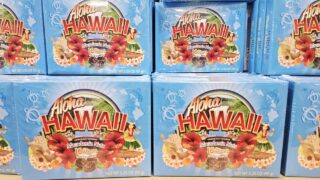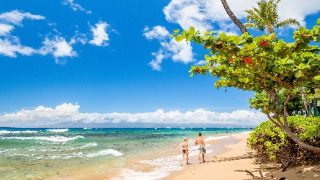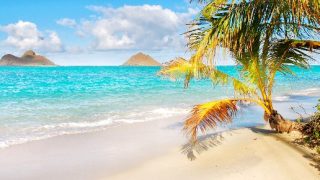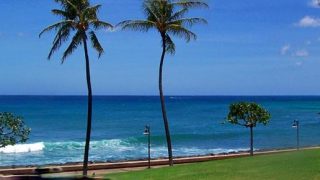Once upon a time, bringing home souvenirs was a simple way to remember a Hawaii vacation. Now, you might need an installment plan to afford it. Consider this:
There are standout options for those seeking premium Hawaiian chocolates—but be prepared for sticker shock. At least one company, Maui Ku’ia Estate Chocolate, now offers an installment plan for souvenir purchases. That’s right—if you crave handcrafted Hawaiian cacao, you can spread your payments over time, like a plane ticket or resort stay.
Hawaii’s rising travel costs have been well documented—higher airfare, hotel rates, and dining expenses all add up. Now, souvenirs may be joining the list of hidden costs. What was once an affordable treat is quickly becoming a luxury.
Thom A. shared his experience, saying, “After our visit in June… there was minimal purchasing. Ten dollars for a box of chocolate-covered macadamia nuts??? Nobody got one this time.”
As visitors adjust to the rising costs, some are still willing to splurge, while others are reconsidering whether traditional souvenirs are worth it.
Where are visitors shopping instead?
With traditional souvenir stores feeling the pinch, visitors are changing their shopping habits. Many are now turning to big-box retailers and grocery stores for better deals.
Richard C. noted, “Living on the West Coast, we can buy many Hawaiian products at the local Costco—even Honolulu Cookies.”
Others stock up at places like Walmart, Longs, and ABC Stores, which often have lower prices than dedicated gift shops. The convenience of ordering online from Amazon or direct-from-Hawaii brands also means some travelers are skipping in-person souvenir shopping altogether.
Did you find a volcano t-shirt you loved but found unaffordable? A quick image search on Amazon yields ten alternatives, all with free shipping. BOH editor Rob said, “I’ve been guilty of this myself in other places.”
Authenticity vs. affordability: the dilemma of Hawaii-made products.
One of the most significant shifts in the souvenir market is the growing demand for authentic, locally made Hawaii goods. Many travelers now pay close attention to where an item is made before buying.
Perry M. explained, “Before buying any souvenirs, I always turn it over and look for the place of manufacture. If it doesn’t say Hawaii, then I don’t buy it.”
The emphasis on buying authentic Hawaii-made products supports local businesses but also comes at a price. Locally made items are often more expensive than mass-produced souvenirs imported from overseas. Some visitors are willing to pay the difference, while others simply opt-out.
Chris shared his frustration when trying to replace an old souvenir. “I thought it would be easy to find a new monkey pod salad bowl. All I found were ones made in Thailand.”
For those who prioritize authenticity, stores like Na Mea Hawaii in Ward Center cater to shoppers looking for genuine Hawaii-made goods. Another favorite is Roberta Oaks in Honolulu Chinatown with their island wear made in Hawaii. Farmer’s markets and craft fairs also remain popular spots for finding unique, locally produced souvenirs.
From trinkets to experiences: a changing souvenir culture.
Some visitors are moving away from traditional souvenirs altogether, instead favoring experiences over physical keepsakes.
Thom A. explained, “My souvenir is my photos and memories of being at a beautiful beach. And if I have to dust it, I don’t need it anyway.”
Practical gifts have also become more popular. Instead of keychains and magnets, visitors are bringing home scented soaps, island-made lotions, and high-quality locally made food products. Others seek out functional keepsakes like insulated wine bags, aloha-print tote bags, and handcrafted jewelry, some from Hawaii and much of it, not.
Mary K. shared, “We tend to buy something for the house or jewelry for me when we visit. I am looking at our three-panel pic on metal of Hanalei Bay as I write this.”
Handmade artwork remains a favorite among those looking for something unique. Diana explained, “Our most valued souvenir is a hand-carved whale tail from a local Maui artist. But I always buy Kona and Kauai coffee!” Which leads us to the next question.
Is your Hawaii coffee really local?
Many visitors assume that when they buy Hawaii-branded coffee, they are supporting local farmers and sustainable agriculture. The reality is more complicated. Some of the most widely available “Hawaiian” coffee is actually produced by a global coffee conglomerate, Massimo Zanetti, which owns large-scale operations in Hawaii.
Their practices have raised concerns, as they are reportedly the largest consumer of pesticides on Kauai and rely on temporary imported labor for harvesting. Unlike the romanticized image of coffee being carefully hand-picked, much of their production is done by massive harvesting machines.
On the other hand, fine, small-batch coffee from the Big Island—especially from the Kona and Ka‘u regions—is a completely different product. These beans are hand-picked and grown on small farms, where quality and sustainability are often prioritized over mass production.
While these coffees are significantly more expensive, and might even be financed, they represent the true essence of Hawaii-grown coffee. For those seeking authenticity, it’s worth looking beyond the branding and choosing coffee directly from local farms or reputable sources.
Final thought: A small shift or a bigger trend?
For visitors, the question remains: is this just another expense of traveling to Hawaii, or a sign that the traditional souvenir market is slowly fading away?
Lead Photo Credit – Beat of Hawaiia at Hilton Hawaiian Village.
Get Breaking Hawaii Travel News






I actually found that the Saver’s in Honolulu had decent souvenirs, as they sometimes get the excess that didn’t sell. Also, the Honolulu Saver’s has neat stuff like Asian ceramics that would cost way too much at retail.
Installment plan. Really. Not like a credit card bill that comes out with the charges a month later. IMO most people shopping and do this will never see the terms of the plan. IMO a hold, a monthly processing fee, a high interest rate for unpaid balances with state tax applied to the balance each billing cycle. Great sale person only pay once upfront then pay rest over what 3 more months. IMO just a tactic so that overpriced item can be affordable and make the tourist forget about the whole grand total. Spend $100 but really owe $400. IMO that $10 dollar box of chocolate might cost you $20 when it is all said and done. By the way chocolates do melt easy when exposed to warm temperatures. Who really wins?
ABC Stores. Lion Coffee (also known as Hawaiian Coffee Company) for the clothing because they don’t sell them on line and the Navy Exchange, Pearl Harbor. If looking for trinkets go to Duke’s lane. The little shops reminded me of the old International Market place.
Lowest cost country of manufacturing rules the day. It sure isn’t Hawaii… I actually try really hard to ID made local products and items to take back as omiyage but it’s getting to be almost a pointless search. Particularly at the modestly priced level. One of the most requested bring backs for me are bags of Alaea Salt, they’ve gone from 3-4 bucks a bag to 15 -20 dollars and that’s at Donqis which is a discount Japanese mart. If you want to splash out for gold and Koa wood barrel pens, handmade custom ukes, or carved gold jewelry – no probs…
Just finished up a 13 day HI trip to Oahu and BI. Brought home $500 or so of souveniers, mostly food, mostly for others. Every traveler has their own unique way of experiencing for themselves and providing a taste of that feeling to others.
I rarely check the labels for authenticity, and instead prioritize what will remind me of the islands, regardless of who actually manufactures it. One of my favorites is the pineapple-scented Bungalow Glow candle, commonly sold at ABC stores. Is it made in HI? I have no idea. Is it cheaply made? I’m sure it is. But when I burn it on my counter at home, the scent takes me straight back to Waikiki, Aulani, and Kona. And that’s what I buy personal souveniers for.
The whole “installment plan for chocolate” thing cracked me up. Are we financing everything now? Next thing you know, we’ll need a payment plan for a keychain.
I used to load up on souvenirs every trip, but now? The prices are crazy. I wanted to bring back some macadamia nut chocolates, but at $10 a box, I just laughed and walked away.
If you need installment payments to buy candy, you need to rethink your priorities